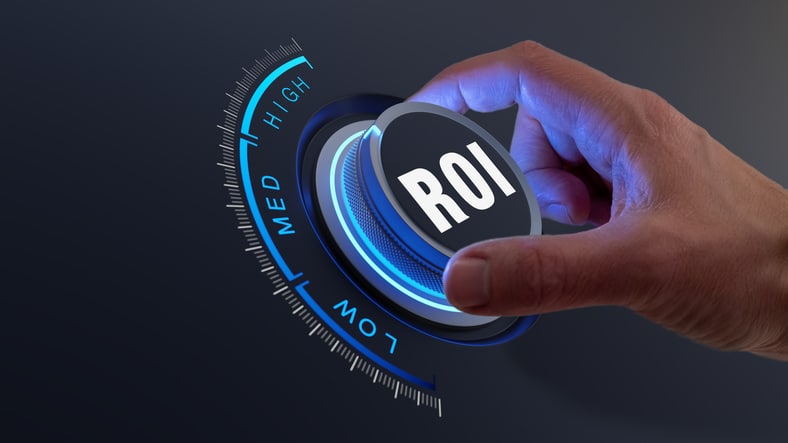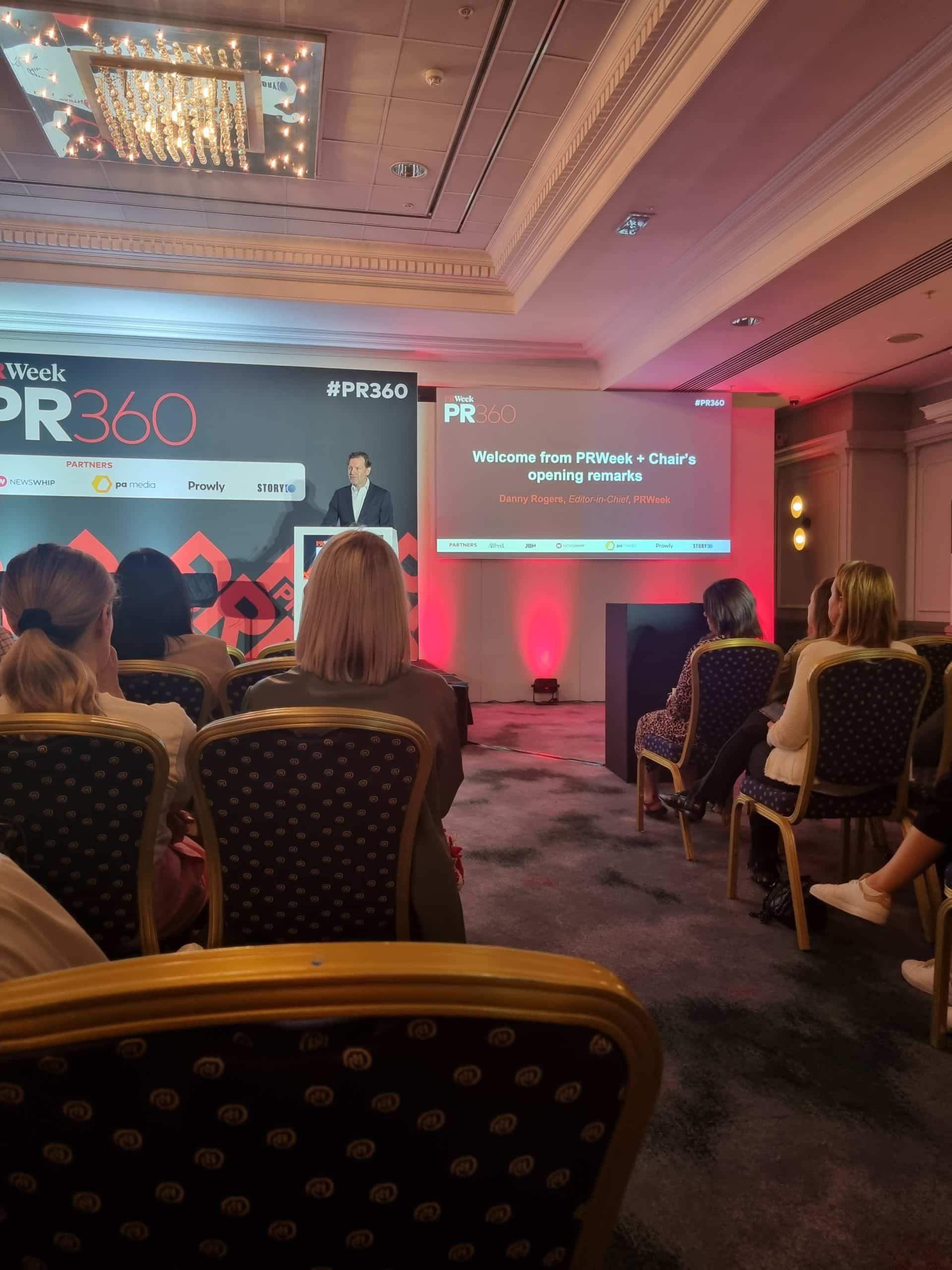
Despite the age, size, and nature of your brand or business, there’s one observation you must have made by now. A brand’s reputation and customers’ perception and attitudes towards it are key to its success and sustainability.
You might also know that the two are vital aspects of good public relations (PR). And with good PR, you can easily win over your target audiences.
However, what you might not have established is the specific PR activities and practices that will positively impact your brand’s PR campaigns; how and when to execute them. To resolve this, you’ll need to create an effective PR strategy to help you achieve your PR goals and objectives.
In this post, I will discuss a PR strategy, its importance, and the steps to create an effective PR strategy for your brand. I will also include a PR strategy template. Let’s dive right in.
What is A PR strategy?
A PR strategy is a guide that outlines all the steps your brand must take to boost brand awareness, build your brand’s image, maintain positive relationships, and achieve other PR goals.
As a result, a PR strategy is used to guide you on the best PR actions to benefit your brand in various situations and achieve both long-term and short-term goals.
For instance, if you’re going through a PR crisis, your PR strategy should have guidelines on how to best manage it with the least damage to your brand image. The strategy will also outline the best channels and steps to follow to get your message across.
The same process applies during other PR campaigns, like launching a new product. But, of course, the exact steps and messaging will vary depending on the type of campaign.
It’s important to note that the effectiveness of a PR strategy is heavily reliant on its implementation. If well implemented, your PR strategy will help you make strategic decisions that will help you easily control, manage and boost your brand’s reputation and profile.
Finally, a PR strategy should be agile, meaning that it should remain flexible enough and adapt to new data, market opportunities, and challenges. This will ensure that the strategy stays updated on new and better ways to attract customers and retain a positive brand image.
Importance Of PR Strategy
There are various reasons why a PR strategy is important to brands, including.
- Boosting brand awareness and loyalty: A good PR strategy will help your brand generate audience interest which you can use to gain quality leads that you can nurture into brand advocates. The advocates will help boost brand awareness even further.
- Attracting investors: Your PR strategy will allow you to better position your brand with the help of various PR channels and tactics, which boosts your brand image and credibility. This then attracts investors who deem your brand a worthy investment.
- Providing direction: With the help of a PR strategy, you can use PR activities to control and manage your brand image and how it appears in public. This is especially important during a PR crisis, which can quickly get out of hand. With a PR strategy, you’re always ready for the worst and will just need to refer to your strategy for direction on managing the crisis.
- Building brand trust: A PR strategy will help you choose the proper PR communications channels and communicate effectively with stakeholders. That enables you to build a solid brand identity, making it easier to earn your stakeholders’ trust.
A PR strategy supports your overall business goals. For example, it integrates with your marketing strategy to boost your sales and ROI. Therefore, you will be shooting in the dark without a good PR strategy, which can render your marketing efforts useless.
6 Steps to Create a successful PR strategy
You can create an effective PR strategy in six steps. Let’s break them down below:
1. Define Your PR Goals
Defining your PR goals is the first step in creating a successful PR strategy. Your goals will guide you throughout the other steps in your PR strategy, especially determining the target audience, key message, and PR channels to use.
PR goals are more general and entail what you want to ultimately achieve—unlike objectives that I will discuss later on. A useful example of a good PR goal is a B2B PR agency stating that they want to be the top PR brand in the UK, i.e., establishing brand authority.
While PR goals vary depending on the nature of the business and the objectives, here are examples of common goals you can start with.
- Increasing current customers retention
- Boosting brand awareness
- Entering a new market or growing market share
- Promoting a product launch
- Establishing brand authority
Your goals should provide a clear purpose for your PR strategy, which boosts the success of your PR efforts. So have your goals written clearly and refer to them to ensure you stay on track throughout your PR strategy execution process.
2. Analyse Your Target Audience
While the goal is usually to reach as many people as possible, you can’t just target everyone. You must identify your key audiences and understand how to communicate with them effectively for your PR campaign to be truly impactful. This is why analysing your target audience is crucial when creating your Public Relations plan.
To analyse these key audiences, start by taking the time to understand your current audience and customers—their personal details, demographics, patterns, and behaviours. You can get most of this information from the customer data you’ve collected or through customer surveys.
Next, analyse your top competitors’ audiences. This will help you identify your ideal target audiences since you have the same focus. Look at the channels they use to reach these audiences and the gaps you can fill to stand out.
You will also need to conduct general market research to identify industry trends and gaps. This will help you create a PR strategy that gets your current audience’s attention while enabling you to attract new audiences with unique value propositions.
Once you’ve thoroughly analysed your target audience by collecting enough data, develop a target audience persona to guide your PR efforts. Here’s a great example of one you can emulate.

It’s important to note that in PR, the target audience is not only the consumers but also other stakeholders like journalists, influencers, investors, and employees who can influence consumers.
Therefore, ensure you have different personas for different audiences. This is one of the key differences between PR and marketing campaigns. An effective PR campaign goes beyond targeting potential customers.
3. Carry out Your Research
Research on your brand and market is the next crucial step when creating a PR strategy. It allows you to notice past mistakes, making it easy to overcome them in the future and identify existing opportunities to leverage.
Start your research by reviewing your previous period’s performance and current situation. You can do this by answering questions like, what are your current financials, business goals, and brand image? Who are your competitors? This information will provide a foundation you can build your PR strategy on.
You can also use a SWOT analysis like the one shown in Starbucks’ example below to help you determine your current brand’s position and potential.

At this point, it’s also important to conduct a communication audit to see how your brand communicates with its target audience across different channels and how they perform. This audit will help you note certain issues with communication channels and help you develop better strategies.
For instance, you may realise that more people interact with the brand on social media posts and decide to make more PR announcements on social platforms. Alternatively, you can include some social buttons in your press releases.
Also, research the industry to identify any economic, social, or political trends or changes you need to consider when creating your PR strategy. Then, from your knowledge and expertise, try to predict any changes that might affect the industry so that your PR strategy prepares for them.
Considering you need in-depth research, work with other teams like finance, customer support, and the marketing department to get an accurate brand and clearer market overview.
4. Set Clear Objectives
Remember I covered the difference between goals and objectives earlier? Well, let’s go ahead and discuss objectives now and their vitality to a PR strategy.
First, your objectives should be guided or tied to your general PR goals. But unlike the goals, they must be SMART—Specific, Measurable, Achievable, Relevant, and Timebound.
An example of such an objective is “increase our product’s market share in the UK by 16% by the end of the next financial year”.
The timeframe aspect of your business objectives is critical since it encourages accountability. So you go a step further and create an action plan that details the PR activities for a particular period, like a month, the person to complete them, and the specific deadlines.
By setting your objectives and outlining them in your Public Relations strategy, you make it easier for you and your Public Relations team to identify the key points of your PR project. This makes the implementation process easier.
5. Choose Your PR Channels
You’ve already settled on the audience and the messages to deliver. In this step, you’ll outline the PR channels you’ll use to deliver your key messages to your target audience.
PR channels can fall into three main categories (I have deliberately left out shared for the PESO fans):
- Owned– This media comprises all the PR channels and resources wholly owned and controlled by your brand. They include your website, blog, social media profiles, email, and landing pages.
- Paid– This category includes all the channels or outlets your brands pay for to gain exposure, especially to new audiences. Such channels include banners, Instagram and Facebook ads, PPC ads, sponsored posts, traditional media advertorials, news stories, and influencer marketing campaigns.
- Earned– This media comprises any organic media coverage your brand gets without purchasing ad space. It includes social media mentions, journalists’ reviews, customer reviews, and recommendations.
But how do you choose the right PR channels for your brands? First, you must revisit your information on your target audience. What group are you targeting, and what channels do they often use?
Next, consider the nature of the PR communication you want to make, your communication objective, and how communicating via that channel will represent your corporate identity.
For example, if you want to appear credible, use earned PR channel. However, if your communication objective is to reach large audiences, you incorporate multiple channels, including paid PR channels.
It’s also good to ensure you can afford the PR channel you choose, so include a breakout of estimated costs.
Once you understand this, settling on the best channel becomes easier. In most cases, you might also need to combine various PR channels. However, while that’s an option, you don’t have to use all the available channels, especially if your brand is relatively small. You can test the waters a few times before investing your time and effort fully.
6. Track and Measure Your Metrics
Where you work with goals and objectives, there must be metrics you can use to track and measure your success.
That said, PR ROI and efforts remain among the most challenging to measure unless you tie them back to your goals, objectives, and chosen PR tactics.
For instance, let’s say your goal was to grow your social media reach and audience, and say your chosen PR channel to achieve it was social media platforms. Measure social media engagement metrics like mentions, likes, follower count, shares, and comments.
Here are some other standard metrics you should consider:
- Website Traffic – This will help you determine the number of visitors you’re driving to your site with your PR activities and the best-performing PR channels
- Number of subscribers – If your subscribers are growing, it indicates that your PR efforts are paying off.
- Click-through rates – This will help you identify the content that works best and what areas to improve on.
- Organic media mentions – Positive organic mentions boost brand trust since they prove you’re a credible and authoritative brand in the market.
- Sentiment scores – This metric enables you to determine if mentions or comments are negative, which helps you understand customer perceptions and resolve any negative situations quickly.
- Conversion rates – High conversion rates show your PR tactics are working. You can use tools like Google Analytics to investigate the conversion paths or use customer surveys to determine if your PR activities are influencing the level of conversion rates in any way.
It’s impossible to measure metrics you haven’t tracked, so you must invest in tools that help you track your metrics.
For instance, everyone knows you can use Google Analytics to track your website traffic in daily, weekly, or monthly sessions to get details like the traffic source, as shown in the screenshot below.

The Google Analytics tool also allows you to track your metrics by web visitors’ demographics, as shown in the image below.

You can also use social media listening tools like Bradwatch, Meltwater or Hootsuite to track your social engagement metrics and Moz.com or ahrefs to track your domain authority.
Social listening tools can help you monitor brand mentions and customer sentiment. Meanwhile, you can monitor referral traffic and use link-tracking tools to monitor influencer campaigns.
Finally, note that while there are various metrics, you cannot track and measure all of them, especially if you are using combined PR tactics. Therefore, only measure the most relevant metrics to your PR campaign and channels to save time and resources.
PR Strategy Templates You Can Use
Creating a PR strategy from scratch can be tedious, especially if you are doing it for the first time without the help of a PR agency. This is why you should leverage PR strategy templates. Here are two templates you can use.
This first PR strategy template by Hubspot is great for brands looking to create a simple strategy guide with clear guidelines and instructions.

You can also choose a more visual PR strategy template like this one from Slidebean.

The templates are editable and allow you to add more slides, insert images, change backgrounds and add animations.
There are multiple templates you can use online besides the two. All you need to do is customise the PR strategy template you choose to fit your PR needs, and you’ll be good to go.
In Conclusion
A Public Relations strategy provides guidelines on the various steps a brand must take to ensure effective PR communication. It boosts brand awareness and a positive brand image. A good PR strategy also ensures the success of your PR efforts and tactics, which leads to the entire brand’s success.
To create an effective PR strategy, follow the six steps outlined above. Define your PR goal, analyse your target audience, conduct research, set clear objectives, and choose your PR channels. Finally, track and measure your metrics to ensure you remain on the right track.
While a PR strategy is crucial, it might be challenging to create one from scratch. So you can choose a good PR strategy template instead and customise it to fit your PR needs. I have included a few samples here.
Now that you have the foundational tips for developing an effective PR strategy, follow them and launch successful Public Relations campaigns. Good luck with it!
Chris Norton is the founder of Prohibition and an award winning communications consultant with more than twenty years’ experience. He was a lecturer at Leeds Beckett University and has had a varied PR career having worked both in-house and in a number of large consultancies. He is an Integrated PR and social media blogger and writes on a wide variety of blogs across a huge amount of topics from digital marketing, social media marketing right through to technology and crisis management.


